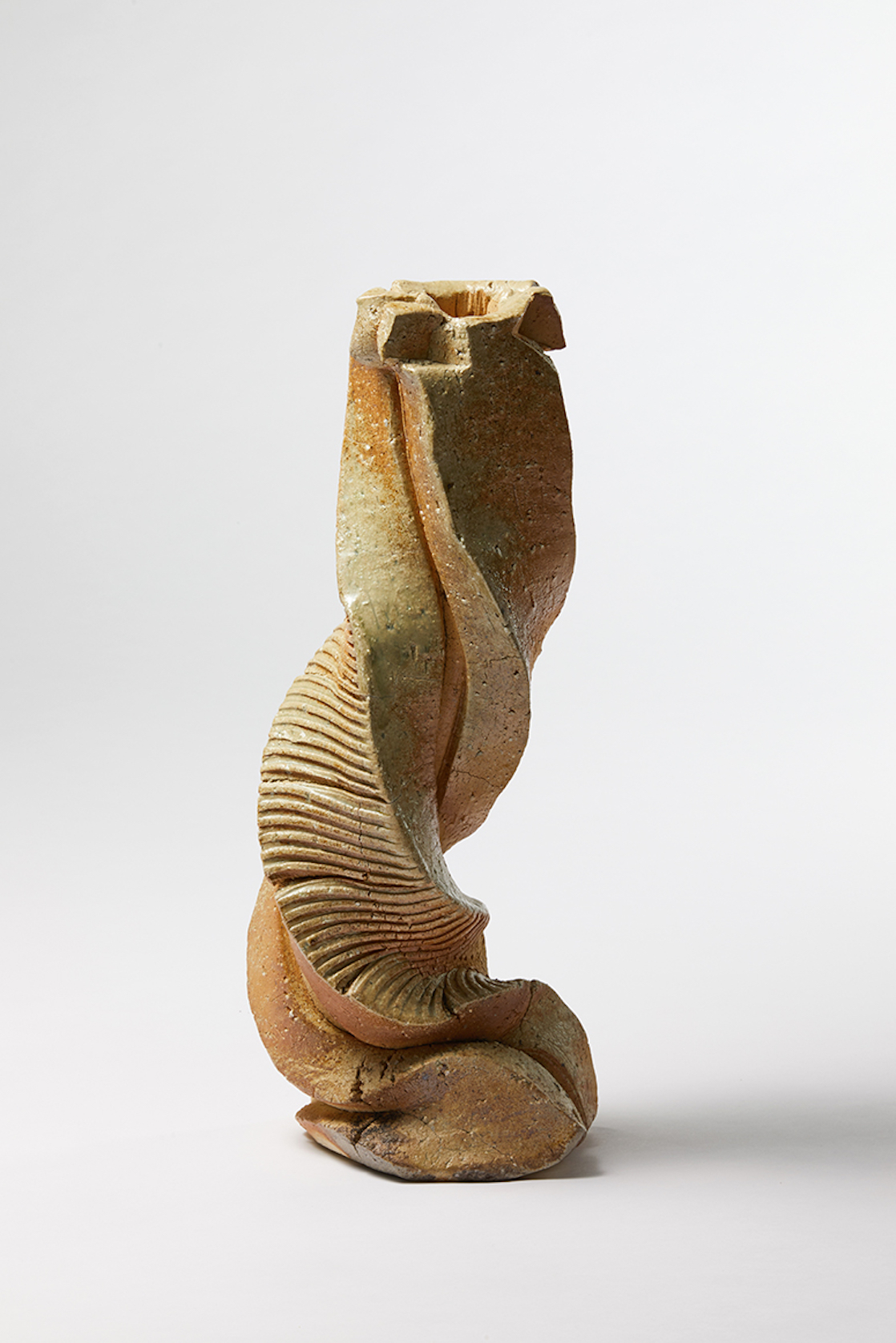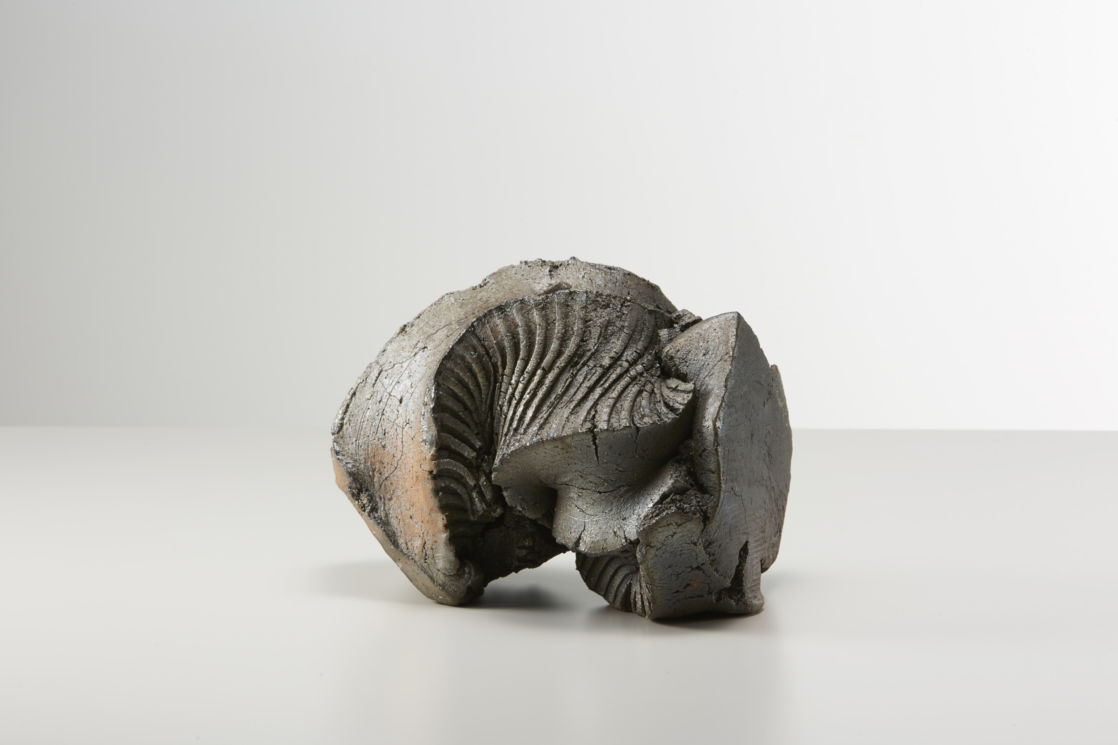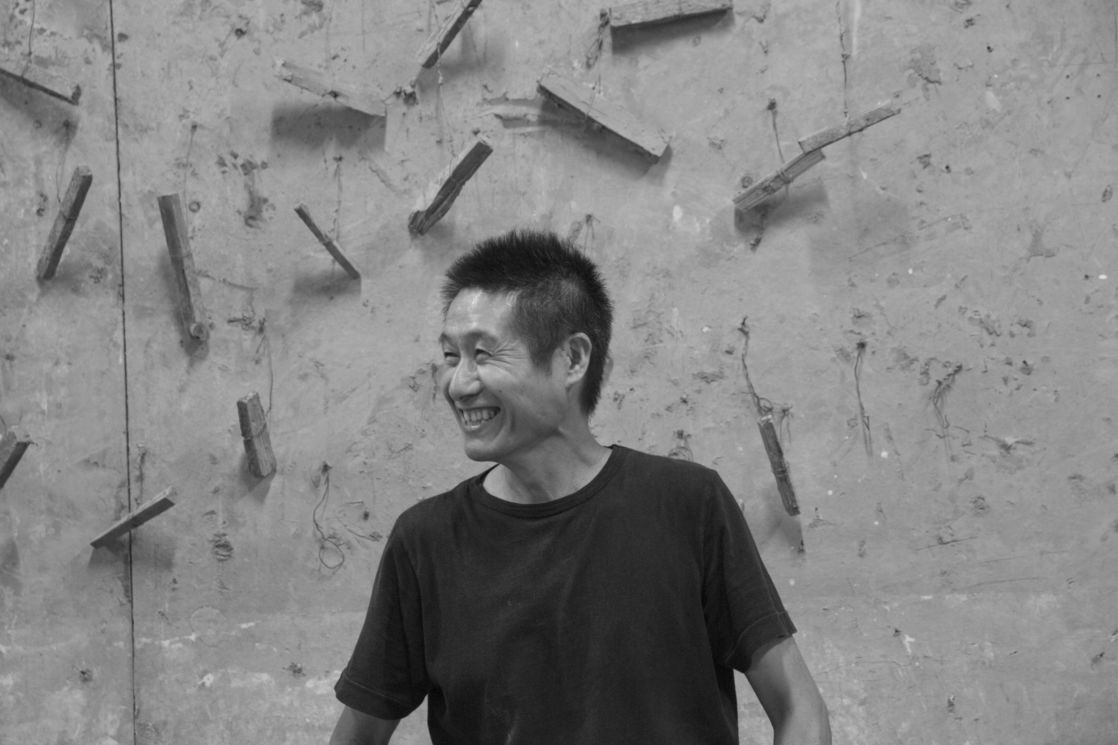Welcome to Ceramic Review
Ceramic Review is the magazine for contemporary and historical ceramics, ceramic art and pottery.
Ceramic Review Issue 326
March/April 2024
Ceramic Review is the magazine for contemporary and historical ceramics, ceramic art and pottery.
March/April 2024
Shozo Michikawa’s unique sculptural vessels have brought him international recognition outside his native Japan. Isabella Smith discovers more about his background and unusual making process

work by Shozo Michikawa; courtesy of the artist
IS: Your work is often described as ‘volcanic’, and
you grew up by a volcano in Hokkaido, Japan – are those facts connected?
SM: Yes – that environment was a big influence on my pottery. I lived by a lake in a beautiful national park beside Mount Usu. Nature there is full of power. When I was in
my mid-20s there was a big volcanic eruption, which I witnessed. I think I gained something from that energy.
IS: How did you come to clay?
SM: I studied economics because my family owned a hot springs hotel – they expected me to continue the business, but I wasn’t a good student as I preferred music and travelling. Once the economy recovered after the war, people had more choices in life. It was the hippy age – and there were lots of hippies in Hokkaido. I liked the lifestyle: no stress and more freedom.
After graduating, I worked in business in Tokyo for three years, but didn’t like it. I studied art at evening classes, where I tried ceramics. I was married and had a baby – and no money and no relationship with the pottery world – but I was young. I decided to move to Seto and become a potter.
IS: That was a brave choice! Did you study ceramics?
SM: Yes – but it was a technical training rather than an art school experience: you learned how to produce identical teacups, and so on. I’d have liked to apprentice with some famous ceramist but we had no money, so I worked at a ceramic factory instead, which was very hard: working from morning to evening with only two 10-minute rests. We were like robots. But I also set up my own small studio, so after work I’d rush there to practise.
IS: Did having a different journey to most Japanese potters help you make unconventional work?
SM: Maybe. In Japan, there are strict hierarchies in pottery – in how the ceramics associations work, and so on. I don’t like hierarchy. I know someone called Tozaburo Kato who is a 34th-generation potter – her family have been making pots in Seto for nearly 1,000 years, and all that time, they’ve been making the same shapes! Being part of a pottery family is an advantage, as you have connections and support from family and friends. But that era was the start of selling directly to customers rather than just through shops, so I could still earn. At first, I made tonnes of functional pieces because they were easier to sell.
IS: How did you develop your own style?
SM: My tableware was very successful. I became so busy that I began employing staff. But I began to feel like a businessman again, which is not what I wanted. There are around 6,000 potters in the wider area, so it was very hard to stand out. I decided to try a new approach: making sculptural work for galleries rather than shops, in a more unique style. That was around 25 years ago.
I experimented with making square or triangular pieces on the wheel and finally came up with my process. I centre a square or triangular block of clay, then cut it into a defined shape. I then put a hand or stick in the centre and expand the form from the inside – never touching the outside – and as the wheel turns, the piece twists.

work by Shozo Michikawa; courtesy of the artist

work by Shozo Michikawa; courtesy of the artist
S: Seto has an ancient pottery tradition, but your work is quite contemporary. How do you view that relationship?
SM: We have almost over 1,000 years of ceramic history here – Seto is one of the Six Old Kilns of Japan. Techniques such as raku and glazes like Shino began here. I’ve studied Oribe and Shino glazes, and other traditional processes, but I have more modern tastes. In the 21st century, with everything changing, I want to express contemporary feelings. We have a typical idea of what makes pottery good: it should be light, easy to use and feel nice to hold – but there is freedom in getting outside of the rules. However,
I always make a small hole in my pieces as a nod to historic vessels. It’s a connection with tradition that I think shows respect. Without a hole, they become pure sculpture. It’s important to me that my pieces can still be functional.
IS: Apart from geology, what inspires you?
SM: Travelling, customs, history and people all inspire me more than art. I find ordinary life more of an influence than anything else. I enjoy meeting people when I’m teaching, especially those who don’t have a ceramics background. They find it very easy to break the rules, which brings new ideas and possibilities to working with clay.
IS: What materials do you use?
SM: Sometimes I’ve dug clay in the mountains, but it’s harder to do nowadays as much of the land is now fenced off. I found one area with excellent clay, but it’s now under a golf course! I’ve kept a small amount that I dug when I was younger, which I keep for special pieces such as teabowls. Usually I have to buy clay. Japanese clay feels more organic and less plastic than those in other countries; I like how it feels, how it cracks.
There’s a lot of movement in my pieces, so I keep glazes simple. Colour would be too much. One is a natural ash
glaze – wood ash covers the piece and melts into a glaze. Another is a white Kohiki glaze, made by using an engobe with a clear glaze on top. Tanka is another option: it’s a way of smoking the pottery with charcoal. I use a silver overglaze sometimes. I like to emphasise contrast, so a matte black tanka piece might have shiny silver areas.
IS: What about your firings?
SM: I built the oldest known type of anagama kiln: the design is around 1,000 years old, dating from the Japanese Heian period (794 to 1185). It’s about one metre square inside. Firing it takes roughly three days, with a team of six people working in shifts. My kiln is in Sasama, where the International Ceramic Art Festival I organise takes place, so I have help from local people.
Before reduction, I can burn any wood, but over 950°C we use red pine – it’s full of resin, which allows us to increase the temperature to 1200°C. I like how difficult it is to predict results – it’s so dependent on the weather. Controlling outcomes through technology is very boring to me. I don’t like to have control. If I only get one good piece from a firing, I’m still very happy. If that happens, I’ll re-fire the other pieces as many times as needed.
IS: Last year, the V&A acquired a piece and you were nominated for the LOEWE Craft Prize. What achievement makes you most proud?
SM: Obviously, exhibitions and prizes are important, but getting work into museums means the most to me. The thought that after I die my pieces will stay on in the world makes me happier than anything.

work by Shozo Michikawa; courtesy of the artist

work by Shozo Michikawa; courtesy of the artist
I’m also very proud of the International Ceramic Art Festival, which I began in 2011. I wanted to give something back: to help the younger generation network, exchange knowledge and communicate with people from abroad. I’ve had a lot of opportunities and want to help others to have them, too. The next one is in November 2021.
IS: Are you still working, despite the current coronavirus pandemic?
SM: Yes, and in terms of making it’s actually much better! I was supposed to give a workshop at West Dean College in May and one at Clay College Stoke in June, alongside
a show at Erskine, Hall & Coe in London, which has been rescheduled to September, but now I can concentrate entirely on making. I usually spend a lot of time travelling. I have galleries in Copenhagen, Brussels, London, Paris, Frankfurt, Milan, Boston, New York, Singapore, Manila… I have one in Japan too, but most of my pieces go abroad. People here prefer more functional pottery. But in the United States, for example, people prefer sculpture, so I have a bigger market elsewhere.
IS: What advice would you give to someone who wants to become a successful potter?
SM: The most important thing is to keep making. Enjoy yourself and be sure to have fun. And rather than focusing on immediate priorities, take the long view to get where you want to go. Don’t expect to gain skills and success overnight. A Japanese proverb says that once you reach 50, you truly begin to pot – the years before were all just practice.
Many thanks to Watami Michikawa for assisting with translation. For more details visit shozo-michikawa.com
This article is taken from Ceramic Review issue 304 (July/August 2020). For more, subscribe below.
